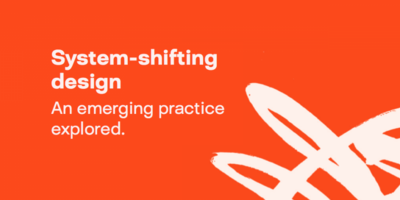Heightec

A project to design a new safety helmet will enable this Kendal-based company specialising in ‘work at height’ safety equipment, training and support, to strengthen its product development process and extend its manufacturing expertise.
Challenge
In late 2013, Heightec had decided to design and manufacture its own working at height safety helmet – the ‘most important product’ it had developed to date, according to Managing Director Keith Jones.
“It was a product we believed would help fuel the business’s further expansion,” he explained. “The idea was that it would be a product used both by every worker working at height, whatever their business, and non-height workers. With limited choice already in the marketplace, we were also confident it would be well-received internationally.”
However, Heightec lacked the experience in plastics injection moulding and the design expertise required to develop this new product. Jones also believed the business’s existing product development process could be improved.
“We knew that to move forward we wanted to make more ambitious products, but to do so we needed to upgrade our development,” he explained.
What we did
Design Council assigned Design Associate Lawrie Cunningham to work closely with Jones and his team. Taking them through an in-depth analysis of the business and its marketplace, the business value that could be gained from a design-led approach was discussed. Potential opportunities for design, innovation and business improvement were then identified and opportunities prioritised.
“It was clear from the outset that development of the new helmet would require skills Heightec did not have in-house,” Cunningham explained. “But this provided an opportunity for the business to extend its capabilities into new areas – including understanding how better to work with external design experts.”
Cunningham and the management team undertook a detailed study to identify issues affecting Heightec’s product development process. A decision was taken to adopt a more clearly sequenced approach which would also ensure the company’s in-house designers had more direct access to end users.
“As a business that provides training and support as well as making and selling products, we were already closely engaged with our customers,” said Jones. “However, we had overlooked the value of our engineering designers being involved in this process. Our Design Associate made us think again.”
Attention then focused on the new helmet. Cunningham introduced Heightec to professional plastics tooling engineers and arranged visits to plastics moulding factories so the team could develop a better understanding of the costs and processes involved.
It was clear the company would need help from an external, specialist design agency. With Cunningham’s help, a detailed design brief was written. Cunningham then introduced the team to a handful of external product design specialists with relevant experience and expertise.
After considering credentials, Heightec appointed Renfrew Group International, a blue chip product design consultancy based in Leicester. Design development began in late 2014, with Cunningham on hand to provide best practice guidance.
“The brief was clear and detailed,” said Renfrew Group International Managing Director, Bruce Renfrew. “Our work began by listening and learning in order to ensure we fully understood what was needed and the business context, then we addressed how best to move on the idea by building into it IP that would help the business more clearly cement itself in its market.”
Results
Looking back, the project woke us up to the importance of visual communications overall.
Keith Jones, Managing Director of Heightec
Heightec’s design project has led to the adoption of a new and improved design and product development process that is more structured and ensures engineering designers have better direct access to the end user.
By early 2015, a rapid prototype of the new helmet had been produced featuring unique IP, including a safety release catch with two ways of disengaging, a new type of helmet venting and an innovative interior fixing. Heightec is due to launch the finished product in summer 2015.
“The advice and support we received has enabled us to optimise the different elements of our production process – which is just what we set out to do,” said Jones. “We thought we already connected well with our end users, but the experience opened our eyes to the need to assume nothing and always ask questions.”
Developing the new helmet extended the company’s capabilities, building its experience with new technologies and materials and effectively managing and collaborating with external expertise.
Jones believes Heightec has also sharpened its understanding of how to position itself and make a clear and strong statement through branding, marketing communications and product design. Above all else, however, the experience pushed Heightec beyond its comfort zone, teaching the company not to take things for granted.
“Work on the helmet has progressed well and we are extremely pleased with where we are now. It’s a great product and we have been able to contribute to the look and feel, working closely with the external design team in what has become a close partnership,” said Jones.
“While branding and communications was not a focus of this project, we were aware that ahead of launching the new helmet this was something we needed to address – which we are now doing,” he said. “Looking back, the project woke us up to the importance of visual communications overall.”
Subscribe to our newsletter
Want to keep up with the latest from the Design Council?

